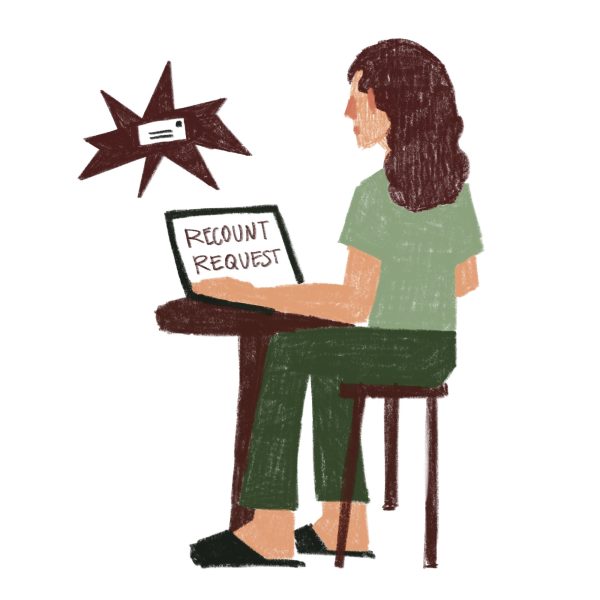UC admission rates decreasing
Over the past five years, the Universities of California (UCs) have had progressively lower admission rates, which has led to frustration of many high school students.
The main reason for the UC’s increasing selectiveness is a change in the funding by the state of California. In the past, California provided the UC system with a budget to educate all students, even if the university over-enrolled students.
However, in the last five years, the state has decided not to fund the students past the allotment, so the UCs can no longer afford to admit as many students as they had previously.
In addition, the population of high school students in California is growing, which means that there are now more students applying to college. According to the University of California Office of the President, the number of California freshman applicants increased by 6.2 percent between 2012 and 2013, while the number of students admitted during this time period decreased by 2.2 percent. The combination of a larger number of applicants who are better qualified and the limited spots available leads to increased stress for students during the college application process.
Another factor that contributes to lower admission rates for California students is that the UCs now admit more students who are international or out-of-state because the UC system can charge a higher tuition, wh-ich makes up for the low budget from the state of California. The number of out-of-state and international freshmen applicants between 2012 and 2013 has increased 14.9 and 34.5 percent, respectively, and the number admitted has also increased 14.3 and 28.5 percent. These statistics show that while the number of Californian, out-of-state and international applicants is increasing significantly, only the number of out-of-state and international admits is rising.
According to College and Career advisor Sandra Cernobori, students have been extremely surprised by the change in acceptance rates at the UCs over the past five years.
“It’s just been a recent shift where [admission] seems less predictable and somewhat surprising to students who did not necessarily expect how selective the UCs are,” Cernobori said.
Not only are the UCs more difficult to get into today than they were five years ago, but since many students also are only applying to certain campuses that they consider more prestigious, generally UC Berkeley and UCLA, there is more competition at these schools. Cernobori emphasizes that the fact that a certain school is more difficult to get into does not change the quality of education offered at that campus.
“Selectivity is not a reflection of value. It [only shows] popularity or desirability,” Cernobori said.
In addition, many students who expect to be accepted to UC Berkeley or UCLA consider some of the less selective campuses such as UC Santa Barbara or Irvine to be “safety schools.” However, the lower admission rates have affected all campuses and many students have faced rejection from schools to which they thought they were guaranteed admission.
“I have seen cases where students got rejected from a UC that they considered a safety school for [the past] two years,” College and Career advisor Alice Erber said.
In fact, several students who did not apply broadly within the UCs have been rejected from every school they applied to. Or, in many cases, students were accepted to some UCs, but not the campuses they had hoped for.
“I just think that people are more disappointed that the UCs aren’t their [best] option,” Erber said. “[Students think] that UCs should be because they are our state schools.”
In order to better prepare students, Cernobori and Erber emphasize the change in admittance rates during individual meetings and encourage students to look at a variety of colleges.
“I want [students] to apply broadly within the UCs as well as outside the UCs, and that doesn’t always happen, so I think I’ve re-enforced that a lot more,” Cernobori said.
Not only does Cernobori encourage students to look at statistics, but she also informs parents who are shocked by the new acceptance rates that the college application process is very different from how it was during their generation.
In addition, Cernobori and Erber advise students to apply to the California State Universities (CSUs) as well as to the UCs.
Although many students consider the CSUs to be a lesser education system, in many cases, CSUs are a better fit for students who are interested in a specific major. CSUs have great majors for pre-professional programs, while the UCs are more broad and conceptual.
However, if students are determined to go to a particular UC, but is not accepted as a first-year applicant or cannot afford the tuition, they can go to community college and transfer to a UC after two years. The UC admission board gives priority to students who apply as a transfer student from a community college to a UC, since students cannot earn a four-year degree at a community college. In fact, there are several community colleges that guarantee a transfer to a UC after two years if the student meets certain requirements.
Although the UCs are not responsible for the change in acceptance rates, the increased competition in college applications has created an unnecessary amount of stress for high school students throughout California.
Your donation will support the student journalists of Palo Alto High School's newspaper












